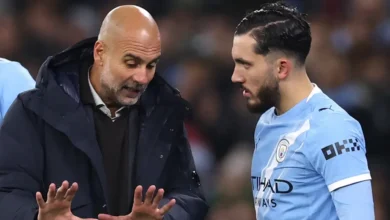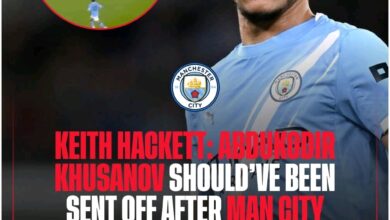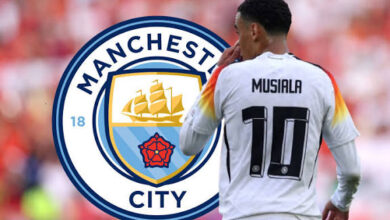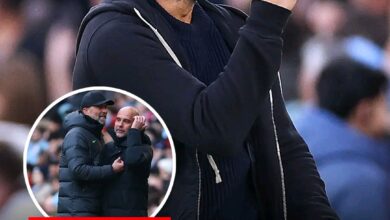Summer Transfer Window 2025: The Complete Football Market Analysis
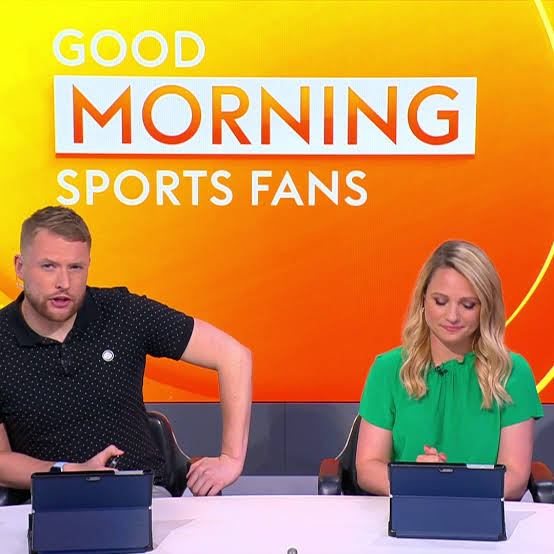
The summer transfer window has burst into action with unprecedented velocity, marking what many consider to be one of the most dynamic periods in modern football history. As clubs across Europe’s elite leagues scramble to strengthen their squads ahead of the new season, the transfer market has become a chess board where strategic moves determine the fate of entire campaigns. The current window, which opened with characteristic fanfare, has already witnessed deals worth hundreds of millions of pounds, with several marquee signings reshaping the landscape of European football.
The intensity of this transfer period reflects the evolving nature of modern football, where clubs must balance immediate success with long-term sustainability. Financial Fair Play regulations continue to influence decision-making, while the emergence of new football markets and the ever-increasing commercial value of the sport have created a complex ecosystem where every transfer carries significant implications beyond the pitch.
Arsenal’s transfer strategy this summer represents a clear statement of intent from Mikel Arteta and the club’s hierarchy. The Gunners are reportedly preparing to launch a substantial bid for RB Leipzig striker Benjamin Sesko, a move that would signal their commitment to securing elite attacking talent. The 22-year-old Slovenian international has emerged as one of Europe’s most coveted forwards, having demonstrated exceptional finishing ability and physical presence during his time in the Bundesliga.
The pursuit of Sesko forms part of a broader Arsenal strategy that includes maintaining interest in several high-profile attacking targets. Aston Villa’s Ollie Watkins remains on their radar, bringing Premier League experience and proven goal-scoring credentials. The England international’s ability to operate across the front line and his understanding of English football make him an attractive proposition for Arteta’s system.
Viktor Gyokeres, the Swedish striker who has been instrumental in Sporting CP’s recent success, represents another dimension to Arsenal’s transfer planning. His combination of pace, power, and clinical finishing has caught the attention of several European giants, with Arsenal reportedly monitoring his situation closely. The former Coventry City striker’s journey from the Championship to becoming one of Europe’s most sought-after forwards exemplifies the unpredictable nature of modern football careers.
Perhaps most intriguingly, Arsenal’s reported interest in Bayern Munich’s Leroy Sane suggests a willingness to invest in established world-class talent. The German international’s experience at the highest level, combined with his pace and creativity, would add a different dimension to Arsenal’s attacking options. However, any potential deal would likely require significant financial commitment and careful negotiation with the Bavarian giants.
The uncertainty surrounding Martin Zubimendi’s potential move to north London has added complexity to Arsenal’s transfer plans. The Real Sociedad midfielder’s apparent reluctance to leave his homeland has forced Arsenal to reassess their midfield priorities, potentially redirecting resources toward other areas of the squad.
Manchester United’s transfer activity reflects the club’s ongoing efforts to rebuild under new management. The retention of Bruno Fernandes, who opted to reject a lucrative offer from Saudi Arabia’s Al-Hilal, provides stability and continuity in the squad’s creative hub. The Portuguese midfielder’s decision to remain at Old Trafford demonstrates both his commitment to the club’s project and the magnetic pull of European football over financial incentives.
The potential acquisition of Brentford’s Bryan Mbeumo represents United’s focus on identifying and securing emerging Premier League talent. The Cameroonian winger’s pace, directness, and goal-scoring ability from wide positions have made him one of the most impressive performers outside the traditional ‘Big Six’ clubs. His versatility in operating across multiple attacking positions would provide Erik ten Hag with tactical flexibility while addressing United’s need for pace and creativity in the final third.
In a surprising development, Aleksandar Mitrovic has emerged as a shock target for Manchester United. The Serbian striker’s physical presence and aerial ability offer a different tactical option compared to United’s current attacking arsenal. Having previously proven his capabilities in the Premier League with Fulham, Mitrovic’s potential arrival would provide United with a traditional number nine option, particularly useful in games requiring a more direct approach.
The convergence of these potential signings suggests United’s strategy focuses on acquiring proven Premier League performers who can immediately contribute to the squad’s competitiveness. This approach reflects lessons learned from previous transfer windows where the adaptation period for foreign players sometimes extended longer than anticipated.
Liverpool’s transfer strategy demonstrates the club’s determination to maintain their position among European football’s elite. The Merseyside giants are reportedly preparing a third offer for Bayer Leverkusen’s Florian Wirtz, one of Germany’s most promising young talents. The 21-year-old attacking midfielder’s combination of technical ability, vision, and goal-scoring threat from deep positions makes him an ideal fit for Jurgen Klopp’s high-intensity system.
Wirtz’s potential arrival would represent a significant coup for Liverpool, given the fierce competition for his signature from across Europe. His ability to operate in multiple attacking positions, combined with his experience in the Champions League, would provide Liverpool with the creative spark needed to compete on multiple fronts.
Simultaneously, Liverpool’s negotiations to secure Milos Kerkez demonstrate their commitment to strengthening defensive options. The Hungarian left-back’s pace and attacking prowess from deep positions align with Liverpool’s tactical philosophy of utilizing full-backs as additional attacking weapons. His relatively young age also fits Liverpool’s strategy of investing in players with significant development potential.
The club’s willingness to pursue these high-profile targets indicates confidence in their financial position and sporting ambitions. Liverpool’s recent success in player development and their ability to integrate new signings quickly into their system make them an attractive destination for ambitious players seeking to compete at the highest level.
Chelsea’s transfer activity has been characteristically busy, reflecting the club’s ongoing evolution under their current ownership structure. The confirmed signing of Liam Delap from Ipswich Town for £30 million represents a significant investment in young English talent. The 22-year-old striker’s impressive performances in the Premier League, despite Ipswich’s relegation, demonstrated his ability to compete at the highest level.
Delap’s arrival is particularly significant given his previous connection with Chelsea manager Enzo Maresca during their time together at Manchester City’s academy. This existing relationship could prove crucial in accelerating Delap’s integration into Chelsea’s tactical system. The six-year contract offered to the young striker indicates Chelsea’s long-term confidence in his development potential.
The club’s pursuit of Hugo Ekitike from Eintracht Frankfurt suggests their striker recruitment won’t end with Delap’s signing. Ekitike’s pace and finishing ability would provide Chelsea with additional attacking options, particularly useful given their participation in multiple competitions. The French striker’s experience in both the Bundesliga and Ligue 1 offers tactical versatility that could prove valuable across different competitive contexts.
Chelsea’s reported interest in Borussia Dortmund’s Jamie Gittens reflects their continued focus on identifying and developing young talents. The English winger’s pace and directness have caught attention across Europe, with Chelsea reportedly leading the race for his signature. His potential arrival would add depth to Chelsea’s wide attacking options while providing another English player for their squad.
The ambitious move for AC Milan goalkeeper Mike Maignan represents Chelsea’s desire to upgrade their goalkeeping position. The French international’s commanding presence and distribution ability would address concerns about consistency between the posts. However, securing Maignan’s services would likely require significant financial investment and careful negotiation with the Italian giants.
Perhaps most intriguingly, Chelsea’s interest in West Ham’s Mohammed Kudus demonstrates their willingness to compete for established Premier League talent. The Ghanaian midfielder’s versatility and creative ability made him one of West Ham’s standout performers, with his potential arrival offering Chelsea additional options in attacking midfield positions.
The decision not to pursue Jadon Sancho, despite previous interest, suggests Chelsea’s recruitment strategy has become more focused and selective. This approach reflects lessons learned from previous transfer windows where quantity sometimes overshadowed quality in recruitment decisions.
Tottenham’s transfer activity reflects the uncertainty surrounding key players and the club’s broader strategic direction. The potential departure of Heung-min Son would represent the end of an era at Spurs, with the South Korean forward having been instrumental in the club’s recent campaigns. His possible exit would necessitate significant investment in attacking reinforcements.
The reported interest in Crystal Palace’s Adam Wharton demonstrates Tottenham’s focus on securing promising English midfield talent. Wharton’s technical ability and composure in possession have made him one of the most highly-rated young midfielders in the Premier League. His potential arrival would provide Tottenham with long-term stability in central midfield while addressing their need for creativity and ball retention.
The current transfer window operates within a complex financial ecosystem where clubs must balance ambition with sustainability. Financial Fair Play regulations continue to influence decision-making, with clubs increasingly creative in structuring deals to comply with regulatory requirements. The use of extended payment schedules, player exchange deals, and performance-related bonuses has become standard practice in major transfers.
The emergence of Saudi Arabian clubs as significant players in the transfer market has created new dynamics, particularly for established stars seeking lucrative final contracts. However, the preference of players like Bruno Fernandes to remain in European football demonstrates that sporting ambition often outweighs purely financial considerations.
Youth development and the identification of emerging talents have become increasingly important as clubs seek to balance books while maintaining competitive squads. The success stories of players like Delap and Wharton highlight the value of investing in promising young professionals who can contribute immediately while retaining significant development potential.
The transfer movements occurring across major clubs reflect evolving tactical philosophies and the increasing importance of squad depth in modern football. The congested fixture schedules resulting from expanded European competitions and domestic obligations require clubs to maintain quality throughout their squads.
Arsenal’s pursuit of multiple attacking options reflects the recognition that competing on multiple fronts requires tactical flexibility and squad rotation. The different profiles of their targets suggest a desire to possess various attacking solutions for different competitive scenarios.
Manchester United’s focus on Premier League-proven players demonstrates pragmatism in their rebuilding process. The immediate familiarity with English football’s demands reduces adaptation risks while providing more predictable integration timelines.
Liverpool’s combination of creative midfield reinforcement and defensive strengthening reflects their understanding of the balance required to compete domestically and internationally. The profiles of their targets suggest a desire to maintain their high-intensity playing style while adding tactical sophistication.
Chelsea’s comprehensive approach to squad building reflects their resources and ambition to compete across multiple competitions. The variety of positions being addressed demonstrates their commitment to squad depth and tactical flexibility
The transfer movements also reflect broader trends in international football development. The continued attraction of Premier League clubs for young continental talents demonstrates the league’s global appeal and developmental reputation. Players increasingly view moves to English football as career-defining opportunities that can elevate their international prospects.
The success of clubs in identifying and developing young talents has created a competitive advantage that extends beyond immediate squad building. The ability to nurture players and subsequently realize their transfer value has become an essential component of sustainable club management
As the transfer window progresses, several factors will influence its ultimate success and impact on the upcoming season. The timing of deals becomes increasingly important as clubs seek to integrate new signings before competitive action begins. Pre-season preparations and tactical familiarization require adequate time for optimization.
The evolving nature of football finances, influenced by broadcast revenues, commercial partnerships, and regulatory changes, will continue shaping transfer market dynamics. Clubs that successfully navigate these complexities while making strategic acquisitions will gain competitive advantages that extend beyond single seasons.
The current summer transfer window represents more than mere player trading; it embodies the strategic vision and competitive ambition of football’s leading institutions. The deals completed and pursued reflect each club’s understanding of their current position and future aspirations within the increasingly competitive landscape of modern football.
As negotiations continue and deadlines approach, the decisions made during this period will significantly influence the competitive balance of major leagues and European competitions. The successful integration of new signings, the retention of key players, and the strategic building of squad depth will determine which clubs emerge strengthened from this intensive period of activity.
The human drama inherent in these transfers – players seeking new challenges, clubs pursuing strategic objectives, and fans anticipating improved fortunes – reminds us that football’s commercial evolution cannot diminish its fundamental appeal as a sport that captures imagination and inspires passionate loyalty.
The coming weeks will reveal whether the ambitious plans and significant investments of this transfer window translate into on-field success, but the intensity and scope of current activity suggest that the upcoming season promises to be one of the most competitive and unpredictable in recent memory.






